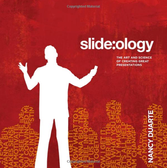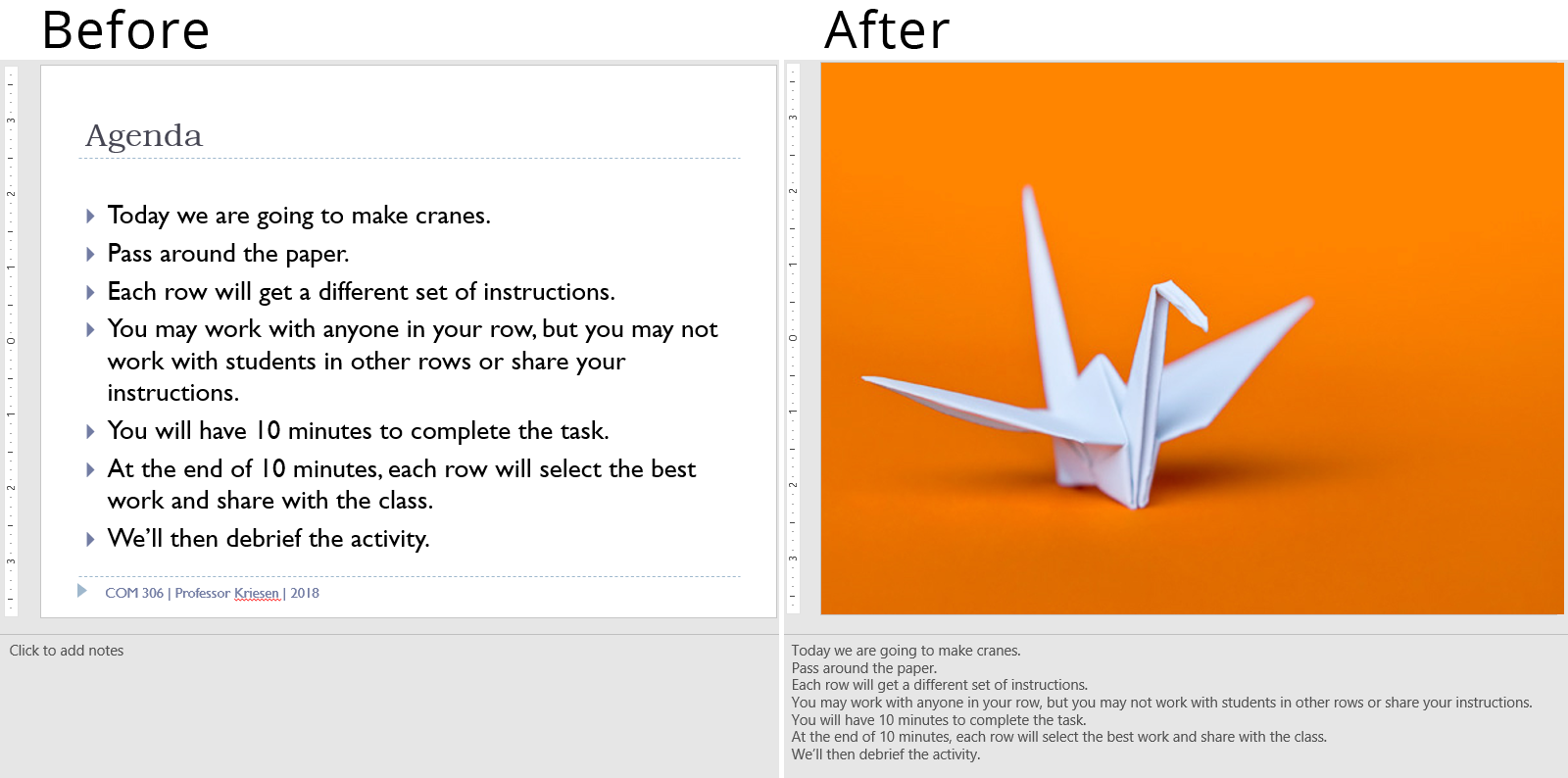|
In January, 2022, our founder, Cindy Chambers joined Thomas Houck of Thomson Reuters in a podcast for the Association of Insurance Compliance Professionals (AICP) where they discussed diversity, equity, and inclusion (DEI) learning and development, consulting, and change. Below, we share more on the topic, the podcast, and handouts provided by Solutions Arts.
PODCAST INTRO
In the year and half since the George Floyd murder and ensuing social uprising, organizations of all kinds have shown increased interest in learning about Diversity, Equity and Inclusion (DEI). Many firms endeavor to offer training and education programs for their employees in this area. It’s natural to feel paralyzed about how to begin to address DEI education within and across an organization. Have you considered engaging a DEI consultant or team to chart a path forward for change?
Join veteran DEI consultant Cindy Chambers of Solutions Arts and Thomas Houck of Thomson Reuters as they dig deep into the topics of DEI learning and development, consulting, and change. In this conversation, Cindy and Thomas define terminology, share a list of essentials to engage DEI vendors and consultants, and outline action steps to create change. Among many of the questions answered in this podcast are the following:
Cindy and Thomas both gratefully acknowledge the expertise and resources available on these topics at the Equity Literacy Institute. Find out more at www.equityliteracy.org.
Cindy Chambers owns and operates Solutions Arts, LLC – a performance improvement collective of experts who are passionate about fostering a growth mindset and delivering outcomes that support and sustain it.
Her professional expertise spans 25+ years consulting in the areas of diversity, equity, inclusion, and accessibility (DEIA); organizational development and learning and development; and, registered apprenticeships. She and her team engage with clients around the globe who seek to invest in and support their most important assets: the people who—and the culture they’ve created to—deliver exceptional goods and services every day.
Thomas Houck is a subject matter expert in regulatory compliance for insurance and financial services at Thomson Reuters, where he is currently celebrating his 25th anniversary of employment. He’s a graduate of St. Olaf College in Minnesota and Georgetown Law in Washington, DC. He has worked for Thomson Reuters in virtually every region of the US and currently – and hopefully permanently – resides in San Diego, California. He currently helps coordinate the activities of the AICP’s Committee on Diversity, Equity, and Inclusion.
0 Comments
Are mentoring programs worth the effort? In a word, yes! You hear about reskilling and upskilling across all industries. The average half-life of skills is now less than 5 years, and in some technology fields, it’s just 2.5 years, according to the Harvard Business Review. But skills are only half of the story. How can you be sure employees are applying those skills? With a structured mentorship program, you can take learning and development to a new level. Whether your goal is reskilling, upskilling, or launching an apprenticeship, mentorship is a must-have to produce outcomes. 92% of all U.S. Fortune 500 companies have mentoring programs What’s In It for Organizations  It's easier and cost-effective to invest in your existing employees. One of the many ways to develop high-performers is through a well-defined mentoring program aligned with career pathways. It's easier and cost-effective to invest in your existing employees. One of the many ways to develop high-performers is through a well-defined mentoring program aligned with career pathways. The benefits start with much higher rates of employee retention and engagement. In a recent, in-depth study of U.S. Fortune 500 companies, MentorcliQ discovered that those with mentoring programs were significantly more resilient against employee quitting trends, with a median year-over-year employee growth of just over 3%. This compares to a median 33% decrease in the number of employees at Fortune 500 companies without mentoring programs. Additional advantages of having a formal program include:
What’s In It for Mentors Mentoring can be a very rewarding experience for many reasons, from personal satisfaction to having a lasting impact on an organization. Benefits for mentors include:
What’s In It for Mentees? Benefits for mentees/apprentices start with the fact that 90% of apprentices who complete an apprenticeship retain employment, with an average annual salary of $80,000, according to Registered Apprenticeship, a U.S. Department of Labor training model that spans a wide number of industries. Participating in an apprenticeship program also allows employees to:
You’re Never Too Old for an Apprenticeship … And You’re Never Too Young to Be a Mentor. There is no age limit for giving or receiving good advice. While the term “mentor” may conjure up images of Mr. Miyagi, the sensei to a teenage Karate Kid, the statistics show the age range is much broader. Unlike other countries, the average age of new apprentices in the United States is 29. And according to the U.S. Department of Education, the average age of a mentor is only 31 years old. Young mentees may be intimidated working with an executive who’s been with the organization for 30 years. The ideal mentor may be just 3 to 5 years ahead of them. They will have more in common and speak the same language, so they can provide helpful, practical insights and advice about navigating the path ahead.  Regardless of the stage of someone’s career, odds are that they can be a valuable mentor to someone else. Every person is at a point personally and professionally in their lives that other people will likely encounter soon. They’re Good at It, But Can They Teach It? Many of us have worked with managers who were promoted because they were good at what they did … but their workplace skills did NOT translate to effective management. The same is true for mentors in your organization. The best mentors are those who can share their knowledge as they coach and support mentees, and do so with compassion. Creating a solid framework and curriculum for “training the trainers” can ensure that the program helps you meet your objectives and offers consistent experiences for all mentors. Similar to leadership coaching, your program should help mentors to:
What Does Mentoring Look Like? In addition to one-on-one mentoring, your organization may consider shadowing assignments or trial periods along with on-the-job training for employees who want to make a change in career paths. Some companies have less formal programs for peer mentoring, where people of similar ages and/or experience levels support each other. Other organizations use group mentoring, which can provide guidance to a larger number of individuals, with a focus on teaching and skill transfer vs. establishing personal relationships. You may also hear the term “reverse mentoring,” which involves younger employees mentoring senior executives. We feel this is actually more like reciprocal learning compared with the formal definition of mentoring. It’s a two-way street that encourages both parties to teach and learn, developing a stronger relationship. Learn more about our take on reverse mentoring here. Consider Registered Apprenticeship: Superhighway to Good Jobs National Apprenticeship Week in November highlights the power of these programs to address pressing workforce shortages in industries such as teaching, advanced manufacturing, clean energy, cybersecurity, healthcare, supply chain, and other high-priority sectors. Apprenticeships are structured work-based training programs that combine technical instruction (often in a classroom or online) with on-the-job learning and mentoring experiences. The length of a Registered Apprenticeship program varies depending on the employer, industry, and complexity of the occupation. A major benefit of these programs is that they are designed to reflect the communities in which they operate and to improve diversity, equity, inclusion, and accessibility (DEIA) in the workplace. Over the last several years, many of these programs have had success in improving job quality and creating access to good-paying jobs for everyone, including populations that are historically underrepresented (women, people of color, and individuals with disabilities) and underserved (youth and young adults). For more information on this program, feel free to reach out to us or visit Apprenticeship.gov. Where Do You Begin? At Solutions Arts, we’ve created programs to help train and prepare mentors. We give them opportunities to develop the soft skills they need to succeed as leaders and “coaches” to their mentees/apprentices. We’ve seen firsthand the kinds of programs that work—and those that don’t! if you’re considering establishing a mentorship program (or if you have one that isn’t performing as well as you’d like it to), give us a call.
In the previous blog post, we renamed and redefined reverse mentoring as reciprocal learning. The old model of mentoring—whether flipped or not—doesn’t capture what’s truly happening when senior leaders and millennials come together to share their experiences and expertise. For this post, we dive a bit deeper and discuss benefits for both the mentee and mentor, share some guidelines and discussion topics, and touch on how to measure success. Reciprocal Learning Benefits Reciprocal learning creates an environment where learning is a two-way street. When seasoned executives (mentees) are paired with younger employees (mentors) to develop business or digital/technological acumen and promote diversity and inclusion, both grow through the process. The relationship goes beyond traditional mentoring by paving the way for an exchange of learning where a wealth of existing experience is present on both sides. This exchange can drive organizational progress and reap significant benefits:
Guidelines The Society for Human Resource Management (SHRM) recommends reverse-mentorship guidelines that apply to reciprocal learning.[1]
Recommended Discussion Starters Below is a list of discussion starters SHRM shared.[2] We’ve expanded and added to the list.
Success Measures When the opportunity exists for learning to take place, leaders want to see the data and results. Reciprocal learning is a part of an overall learning and development strategy and framework. Drawing from either the Kirkpatrick Model or a blended approach using the Kirkpatrick/Phillips Model to evaluate training efforts applies here as with other training initiatives. Consider:[3]
Next Steps Give it a try. Consider designing and implementing a pilot program on a small-scale basis for six months. This not only provides critical data, but it also creates buzz and grows program champions that may be leveraged during a full-scale implementation. References [1] Gubbi, P., Hubbard, S., & Smith, R. (2017, February 16). How to Create a Successful Reverse Mentoring Program to Promote Gender Diversity. Retrieved February 04, 2018, from https://blog.shrm.org/blog/how-to-create-a-successful-reverse-mentoring-program-to-promote-gender-dive
[2] Gubbi, 2017. [3] Barton, S. (2016, July 19). How to use the Kirkpatrick Model for Measuring Modern Mentoring. Retrieved February 04, 2018, from https://chronus.com/blog/use-kirkpatrick-model-measure-modern-mentoring
Why Curiosity? When people acquire knowledge and skills based on curiosity, they’re likely to retain the information much better than with a traditional “rote” style. Curiosity after childhood is more difficult, but the benefits are clear. People who continue to be curious have stronger cognitive abilities; exploration stimulates brain activity and new neural connections, improving things such as memory, attention, and critical thinking. Curious people also tend to have:
Globally, only 21% of employees are engaged on the job, a number that’s been steadily declining over the last 20 years, according to Gallup research. However, employees with higher levels of curiosity are more likely to be engaged and find meaning in their work, leading to higher levels of job satisfaction and performance. ... employees with higher levels of curiosity are more likely to be engaged and find meaning in their work, leading to higher levels of job satisfaction and performance. Getting Technical Today’s technology both advances and deters curiosity in several ways. On the one hand, most people have easy access to information on a global scale as well as diverse learning opportunities on essentially any subject that interests them via a variety of digital platforms. On the other hand, people may experience “information overload” and have difficulty filtering out relevant and reliable details and sources. Social media algorithms and search engines actually tailor content to our preferences, creating “echo chambers” that expose people only to information that aligns with their existing beliefs, impeding open-mindedness and critical thinking. Make Up Your Mind
Make an Impact By consistently cultivating your team’s curiosity mindset, you can help them realize their true potential and create a culture of learning, creativity, growth, and innovation. This “curiosity culture” ensures that you and your organization can quickly adapt to changes and make progress under any circumstances. Curious about how Solutions Arts can help you create a culture like this? Just reach out!
These are tough times for businesses, leaders, and humans. The skyrocketing unemployment and economic downturn translate to reduced workforces and budgets, which has the potential to extend talent to the breaking point. Historically, leaders tend to cut learning and development (L&D) budgets and redirect funds to sales and operations. Decisions like these leave organizations exposed. When you choose not to invest in the people who drive your business day in and out—your greatest asset——they not only suffer the consequences, but errors increase, customer service and positive experiences fly out the window, profits diminish, and your teams recognize and remember who you were and how you behaved during the darkest times. Leaders who choose this path will witness their brand’s demise and the mass exodus of talent once the economy rebounds. It’s not an either-or situation. You can realign your budgets to sales and operations and L&D without breaking the bank. When you reframe your view of L&D as a cost center to a profit center that is necessary to support sales, operations, and other vital departments, you reap the rewards of the investment exponentially. Your team members can access the information, knowledge, and skills development they need to work and compete effectively in the new normal. They feel validated and supported in a learning culture that is responsive to and sustains them. They engage at their best, and you retain them and their legacy knowledge long after the crisis has abated. In short, L&D is your secret weapon, and we’re here to help you fortify and deliver on that commitment to your valued people. Solutions Arts to the Rescue Many organizations are up to their eyeballs putting out fires, figuring out their next steps, juggling priorities, and inventing new ways to do business. You might see yourself and your organization in one of these descriptors. And much of what we’ve been saying in our recent blog series may have spoken directly to you. We hope you found it beneficial for yourself, your teams, and your organization. If you’ve applied some of the techniques we’ve discussed and you feel that you and/or your team members may benefit from more targeted, specific training, please connect with us. We’d be happy to listen and offer solutions for your unique needs and circumstances. When we first set out to create our recent blog series focused on supporting and developing managers, we wanted to provide steps they could take immediately to tackle the daily onslaught of the unexpected. We knew managers would be strapped with competing priorities and might be struggling to best serve the needs of their organization, teams, and themselves. We asked people where they were struggling the most and then responded with nine articles covering the following recurring themes of how to:
From now to the end of the year, we’re shifting our focus to the next set of challenges confronting leadership. Leaders and teams still face an uncertain future that stretches their ability to remain agile. Our roadmap moving forward encompasses and concentrates on strategy as well as skills development and intertwining the two:
 Mahatma Gandhi said, “In the midst of darkness, light persists.” We hear our own Cindy Chambers often say, “Check out this silver lining!” There are endless reasons these days to feel enveloped by darkness, but excessive optimism isn’t the remedy. Instead, we don our headlamps, combine our lights, and pave the way forward. We hear it weekly from our clients. All are rising to the challenges presented by the new normal and shining brightly. We see them express care and vulnerability with their teams and leadership, and as a result, great things happen. Trust and safety are built and earned. Increased communication and bonding lead to pivoting and soaring productivity. In the midst of darkness, light persists. A simple act—such as honestly answering the question, “How are you?”—opens a space for authenticity, vulnerability, and caring. One such leader experienced this firsthand after a series of rough weeks. The cumulative effect of those weeks wore him down, yet every day he slipped on his mask and soldiered forward until the day his leader asked, “No really … how are you?” The floodgates opened, he had a chance to empty out what had been festering, and his leadership team jumped at the chance to show him the same support and care he had always shown them. He got to be a human first, a c-level suite leader second, and his leadership team’s trust in him as a result of his vulnerability multiplied. Brené Brown shares her journey when talking about the power of vulnerability. Among the many things she uncovers on this journey is this: “To let ourselves be seen, deeply seen, vulnerably seen … to love with our whole hearts, … to believe that we’re enough. Because when we work from a place, I believe, that says, ’I’m enough’ … then we stop screaming and start listening, we’re kinder and gentler to the people around us, and we’re kinder and gentler to ourselves.” We’ll wrap up this current blog series with an activity that we encourage you to try, should you choose, to dare to be vulnerable.  Exercise: Who’s Got Your Back? Either on your own or in a truly safe environment where all participants may answer without fear of reprisal, ask, “Who’s got my back?” Followed by, “Who’s back do I have?” See if it opens the door to deeper conversations, possibilities to grow yourself and your connections, and shine a light on and heal wounds. Remember to return next week to read our blog on the course we’re charting from now to the end of the year. For example, you may find your emotional intelligence skills improving while your resilience is waning. Or, you might feel stuck on how to transform diversity, equity, and inclusion from transparent conversations to real, authentic action. We’ll be discussing this and more. We’ve got some exciting stuff in development, and we’re looking forward to sharing it with you. Solutions Arts’ team member, Gretchen Kriesen is on a first-name basis with the angst and stress that can accompany public speaking and presenting. She wears multiple hats at and outside of Solutions Arts. As our lead project manager, she skillfully shepherds projects from concept to implementation, maneuvers obstacles with aplomb, communicates effectively with both clients and project teams, and does all this with a killer sense of humor. Gretchen is also our design guru and document architect. She shares her deep skill set and years of experience in design with her undergraduate students at SUNY Polytechnic Institute. For years, Gretchen has been teaching a variety of communication courses where she combines theory and practice and draws a great deal from her successful career to prepare students for the real world. Knowing all of this, it might be surprising to learn that Gretchen dislikes public speaking and presenting. We thought: who better to speak on this topic from a personal experience and demonstrate how these best practices and tips apply to the real world? We asked her to share her journey and how she overcomes her presenting fears to give life to what we’ve been discussing in these two articles on presentation skills. I hated presenting. “Hate” isn’t quite right. I loathed it. I loathed it with every fiber of my being. I loathed it more than making dinner every night for the past four months because we can’t go out to eat. I didn’t even like answering questions in school (constant feedback: “Does not participate in class”). I’m not a huge participant in meetings, either. Given the choice, I wouldn’t speak in front of a crowd. Ever.
And yet, I teach. Ironically, I teach a course in public speaking. For the first year, I began each and every teaching day the same: after a sleepless night, I spent my mornings wondering why I was doing this as I checked over my notes and my decks. During my drive, I continued to stress out and review my presentations. When I got to campus, my heart rate went into hyper-drive as I walked to my room. Sometimes I hoped the class was cancelled (yes, sometimes instructors want the classes cancelled, too). By the time I had my hand on the door handle, I was deeply resisting running away and hiding in my car. I was out of breath and sweating. And then I walked in. I just … did it. Over and over again. And it got easier. It’s true! Along with all of the tips we’ve talked about in the last two articles, I kept asking myself why I was teaching, why I was doing this thing that scared me, top of mind. You see, I teach because I believe I can help my students prepare for their careers. That’s why I’m there: for them. They are worth the stress. I think this attitude—that, at the very least, the audience isn’t the enemy, really helps keep the anxiety from being overwhelming. Even with the right attitude, the key to my presentation style is to establish a positive environment and for my talk to feel more like a conversation (one in which I might be hogging the discussion). I do this by connecting with my students and encouraging them to connect with each other. I make sure my examples and vocabulary relate to them; I give them lots of group activities to help them learn and get to know and trust each other. The result (ideally) is interested and engaged audience members who participate and learn. (Sometimes the result is that I epically mess up and we all laugh and move on. When you establish the right environment, mistakes are forgiven.) Let me underscore that stress is not the enemy. I teach online sections of my classes (both before the pandemic and because of the pandemic). And guess what? No stress. Know what else? I’m less effective. That’s not just my self-assessment; I see it both in the quality of work from my students as well as in the evaluation scores they give me. I think that the lack of stress results in less enthusiasm and less of a connection with my students. So, while I like the angst-free mornings when I teach online, I think that the lack of nervousness works against me and I have to work harder to create the same energy. (And while we’re here, teaching effectively online means changing your lesson plan, decks, and pacing. You have to get creative and work with the software to even come close to the connections you get in a traditional classroom. It isn’t as simple as slapping the same content into Zoom and running with it. Ask any teacher or professor and they’ll tell you the same.) I still get nervous, but it’s not paralyzing. I still stress-sweat, but it’s not a big deal. The first day of classes is harder than the last. Some days in between are great. Some fall flat. But each time I get up there, I learn a little more and I get a little better. It does get easier. I tell my students all the time: the more you get up there and do it, the better you’ll be. It’s a combination of honing your skills, learning what works for you, and being able to look back and say, “I’ve already done this so I know I can do it again.” As with most things, it takes practice and focus. And maybe a little bit of angst. Gretchen Kriesen is an adjunct lecturer at SUNY Polytechnic Institute and a business and design consultant for Solutions Arts. She also took a Buzzfeed quiz that told her she was funny, so she’s added that to her resume. This is the second in a two-part blog about presentation design and delivery. Click here to read last week’s installment. Part II: Preparing Your Delivery. You’ve got your deck. You’ve got your notes. Now it’s time to focus on your delivery.  Non-verbal Communication Approximately 93% of the message you deliver is nonverbal.¹ That means the content is just 7% of what you’re communicating. The rest includes your oral tactics/tonality, pacing, facial expressions, body language, eye contact, and so on. You know what that means then: if your non-verbal communication is lacking, the best content will only get you so far. Unfortunately, the delivery just so happens to be the part that tends to stress folks out the most. Creating the presentation or writing the speech is usually not the big issue. Delivering it is. Much of presentation fear is about the unknown. Will I mess up? Will I not know an answer? Will they not like me? Will they laugh at me? Will I simply not be good? All these questions can set your nerves into overdrive and derail your presentation, but only if you let them. So, what can you do? Channel the Nervous Energy First, don’t expect nerves to completely go away. While you will (and you will) get more comfortable as you present more often, most people continue to have some nerves before a presentation. The good news is that you can channel those nerves to improve your delivery. That’s right: the goal isn’t necessarily to squash your nerves, but to use them to your benefit. Nervous energy can translate into positive energy. And you need positive energy to deliver effectively. If you’re flat, you probably sound bored by your own content. Guess who else will probably be bored? Yep. The audience. If you portray interest and excitement, that, instead, is likely to transfer to them. Also, getting in some cardio before you deliver can help drain some excess anxiety. Something as simple as running up the stairs before your presentation can help decrease angst while increasing positive energy. Practice: Get to Know Your Content Simply rehearsing the presentation in your head isn’t enough; that won’t help you check and adjust your speed (when we’re nervous, we tend to go too fast) nor alert you to where you lose track or stumble over words (looking at you, Benedict Cumberbatch, trying to say “penguin”). Instead, begin by rehearsing aloud alone to get used to how ideas sound and flow. Move on to a small audience. Sure, this might feel strange, but it’ll put you in touch with feeling stress and give you the opportunity to practice channeling it. Consider recording yourself. This is especially effective if you’re going to deliver the presentation over video. You can ensure things are technically the way you want them: camera angle, lighting, appropriate background, quality mic (invest in a mic; don’t rely on your built-in microphone). (And of course, you need to be on camera if you’re delivering virtually.)  Practice: Evaluate Yourself Part of rehearsing is analyzing your content and delivery and making updates where necessary.
Look, you may never enjoy presenting; however, following these ideas and tips can give you a tested roadmap to follow and build your confidence and decrease your stress. Additionally, solid presentation skills are so sought after, you easily set yourself apart from your peers as you begin to master them. Click here for our related article: Spotlight: Applied Presentation Skills References
¹ Pease, A. & Pease, B. (2006, September 24). The definitive book of body language. The New York Times. Retrieved from https://www.nytimes.com/2006/09/24/books/chapters/0924-1st-peas.html This is the first in a two-part blog about presentation design and delivery. Part 1: Preparing Your Content Pat is a high-performing manager. She gets results from her team, is respected by her employees and her bosses, and consistently demonstrates expertise in her field. She has high emotional intelligence. In fact, one of the only areas Pat struggles with is her presentation skills. Presenting isn’t something she’s called upon to do often, but nonetheless it is an important aspect of her job. Trouble is, Pat hates presenting—and truth is, she isn’t very good at it. She tends to procrastinate developing her content, doesn’t rehearse it since doing so makes her even more nervous to present. When she does present, she reads directly from her text-heavy screen slides and often races through the content to get it done as quickly as possible. As expected, her audiences tend to not enjoy her presentations all that much either. Pat’s lack of aptitude in this area is holding her back. It might be holding you back as well. The good news is that in addition to many of the other skills Solutions Arts has been discussing with you lately, you (and Pat) can develop the art of presenting effectively. An effective presentation involves two things: preparing your content and practicing your delivery. Working diligently to improve both of these areas will most certainly strengthen your presentation abilities and increase the overall effectiveness of your message, in turn increasing audience engagement. In this first of two articles on presenting, we’ll focus on preparing your content.  Pre-work: Research Your Audience Before you start over-populating slides and creating what Nancy Duarte refers to in her book slide:ology as “sliduments,” do some prework and planning. Doing this upfront will increase the chances that you’ll have a targeted presentation with the right content. Start by understanding who you’re talking to and why they should care. You may be able to wax lyrical about your content for hours on end, but with a presentation you’ve got a specific amount of time and a specific audience. No matter the purpose of the presentation (to inform, instruct, persuade, or entertain), never forget that you’re presenting to meet your audience’s needs and must clearly convey what’s in it for them. What do they gain (or lose) by paying attention? What do they gain (or lose) by adjusting their point of view or acting on your recommendations? Acknowledge where they might resist you and give them compelling reasons for taking the uncomfortable step of working through that resistance. If you don’t convey that, the rest is moot. You’re basically talking to yourself.  Make It Interactive Talk to your audience, not at them. Ask them questions. A “raise of hands” here, a “nod your head” there. Help them feel like they’re involved in a conversation. Just because you’re in an online session, doesn’t mean you can’t interact. Leverage the chat tool to encourage participants to ask questions (if you can, have someone monitoring the chat while you present, which decreases your chances of getting distracted). You can also use features such as polls or the Raise Hand tool to engage your audience . However , interaction is just about those overt actions. It’s also being able to read the audience and tweak your content accordingly. If cameras are on your participants or when you’re in a room with your audience, look for reactions. If several people seem confused, take a moment to go back and explain a bit more . If you sense a lot of resistance, try to add more time to that section of the presentation. Prepare To Be Present; Know Your Content—Don’t Memorize It Connecting with your audience brings us to the art of being present, or “in the moment;” you’re paying attention to what’s going on in the room (virtual or in-person) and you’re able to successfully respond to it. That makes your presentation truly interactive. It also builds the connection with the audience; the more connected they feel, the more likely they are to absorb the content or your message. To be truly present means you aren’t tied to a script. You have to be able to adapt the content as needed. You should absolutely create a detailed outline for your talk. If it helps you to write out a script, that’s fine as well; however, as you start to revise, you’re better off putting notes/bullet points in the comments area of your presentation (and use in Presentation Mode so you can see them) versus trying to memorize a full script (we’ll also discuss how this helps with nerves). For most of us, memorization is going to take us out of the moment. ... your slides should be enhancing what you’re saying, not simply repeating it and certainly not distracting from it. Stop Abusing the Slide Deck The walls of text. The pixelated clip art. The “fun” backgrounds. The playful animation. You’ve seen it. You might have done it. We’re not here to judge what you’ve done. But your slides should be enhancing what you’re saying, not simply repeating it and certainly not distracting from it. In his TEDx talk, “How to avoid death by PowerPoint,” David Phillips says, “If you have … sentences on your PowerPoint, and you persist with the annoying idea of speaking at the same time, what will be remembered by the audience is zero. Or very close to zero.” Click here to read more from our presentation design guru, Brian Prosser. Below is an example of how you can update a text-heavy slide to support what you’re saying rather than simply listing the content and reading it. On the right, the content has been moved to the comments area and we use an image to provide more information and visual interest. Reaching the Half-Way Point
Well-constructed content that’s supported by a well-constructed deck is only part of the formula to a great presentation. Once you know your audience and have the content in a good place, it’s time to develop your delivery. We’ll discuss that and offer tips in next week’s blog. We bet we can guess two of your least favorite aspects of your job. We don’t even need you to take a BuzzFeed quiz to find out. Ready? Here we go, in no particular order:
Are we close? We hear this from our clients all the time. With so many people now having to do these activities remotely, we figured it was a good time to talk about how to do them effectively, even when you can’t be in the room. This week’s article focuses on giving feedback. Next week, we’ll talk about presenting online (which may seem easier but almost never is). Here’s the thing: every manager has to provide feedback. Learning how to do it well can decrease your angst, increase your effectiveness, and help build better relationships with your team. We want to encourage you to think about how you give feedback. Is it always positive? Is it always corrective? Constructive feedback is both — together. Delivering genuine assessments of what is working well and what needs improvement is a fundamental skill of strong leaders.  We see the following as essential to delivering effective feedback:
When you routinely discuss specific skills and behaviors an employee is doing well, you build their confidence—and, in turn, their competence. Build Confidence. Make sure you are communicating what is working. This isn’t basic cheerleading, “Great job!” Nor is it the occasional recognition at a company meeting. When you routinely discuss specific skills and behaviors an employee is doing well, you build their confidence—and, in turn, their competence. Yes, some employees are already confident in their abilities. Some are even over-confident. But there is a significant portion of us, 70% in fact, who suffer from “imposter syndrome.” Ever felt like you’re in over your head and one of these days everyone is going to figure that out? That’s imposter syndrome. There’s also just lingering insecurity or uncertainty whether you’re doing a good enough job. Where there is insecurity, there’s more likely to be sensitivity to feedback. This is a breeding ground for defensiveness, denial, and catastrophizing. However, when an employee knows their boss values their contributions, respects their skills, and supports their growth, feedback can be seen as an opportunity to grow. In a healthy environment, feedback is actively pursued with the purpose to develop skills, receive mentoring, and be elevated as a professional. So, even if you can deliver difficult feedback well, it won’t be as effective if your team members aren’t confident that you believe in them and their work. In a healthy environment, feedback is actively pursued with the purpose to develop skills, receive mentoring, and be elevated as a professional.  Meet Frequently. Employees should never, ever hear about a performance issue for the first time during an annual performance review. Employees should be getting regular feedback so that beneficial behaviors are recognized and fostered while counter-productive behaviors are quickly addressed. When you don’t give ongoing feedback to your employees, performance reviews can become a source of stress because your employees have no idea what to expect. We recommend 1:1 meetings no less than once a month; every two weeks is even better to help keep the momentum going and the engagement consistent. Structure the Meeting. Amy Gallo, author of the HBR Guide to Dealing with Conflict, recommends, “focus[ing] the discussion on three levels: the star’s current performance, her next performance frontier, and her future goals and aspirations.”¹ So, have an agenda. Better yet, have a form you and your employee fill out and review during each meeting. Use it to document new issues, track progress against goals as well as performance improvement plans, and capture any notes to follow up on. This is an extra step that requires a bit more effort from you and your team, but it should yield more structured and productive meetings and make assembling data and information for major performance reviews much easier. Only after you both understand the reason for the issue can you work together on how to productively solve it.  Collaborate. Whether it’s a performance issue or resolving a work-related obstacle or challenge, the best solutions arise from conversations focused on pinpointing the underlying issues. Jean-Francois Manzoni, President of the International Institute for Management Development says, “Managers tend to frame difficult situations and decisions in a way that is narrow (alternatives aren’t included or even considered) and binary (there are only two possible outcomes—win or lose). Then, during the feedback discussion, their framing remains frozen—unchanged, regardless of the direction the conversation takes." ² Keep an open mind. Consider various possible next steps, and together choose the best route to achieve the desired outcome. A proven technique to do this is to use The Five Whys. Walk through an example with your employee by asking them to state a problem while you drill down by asking “why” until the root cause is revealed. Only after you both understand the reason for the issue can you work together on how to productively solve it. Applying this technique circumvents dictating—your employee takes ownership resulting in buy-in. It can also decrease combativeness because you are working together, rather than against each other, to create a solution. Be Straight-Forward. Many of us are of the Oreo/Sandwich/Build-Break-Build school of feedback—say something positive, then give a negative, and then end the conversation on a positive so the employee feels good. The trouble is that this doesn’t work. David Hassell, CEO of 15Five notes that, “Helping someone improve should always be the goal of feedback, but sandwiching corrective feedback between two pieces of positive feedback won’t soften the blow. This method creates confusion for the receiver, undermines your feedback, and can decrease levels of trust.”³ Instead, take a straightforward approach without judging or being accusatory, and be specific about observable behaviors. All of this can be documented on the form you are using to structure the meeting. The end result should be a clear message and offers targeted, actionable feedback your employee can understand. Follow Up. Everyone is busy, and it’s easy to lose focus on those action items that aren’t followed up on. Ever set a goal during a performance review and not think about it until the next performance review a year later? Of course you have. You’ve got a lot going on. To help your teams make progress against improvement issues, follow up (again, the form is a perfect way to keep track of everything). At a certain point, you may agree the issue is closed and the goal achieved, but until then, keep following up and committed to resolving it together. Following these essential elements of constructive feedback transforms the process from a negative, teeth-pulling ordeal to an asset that increases engagement, skills development, and trust, all of which are the hallmarks of strong leadership. Look for next week’s article on how to make presenting a little less stressful and a little more effective, whether you are delivering in the same room as your audience or via conference call (and get ready: we’re going to again tell you how important is to be on camera). References
¹ Gallo, A. (2009, December 3). Giving a high performer productive feedback. Harvard Business Review. Retrieved from https://hbr.org/2009/12/giving-a-high-performer-produc ² Manzoni, J. (2002, September). A better way to deliver bad news. Harvard Business Review. Retrieved from https://hbr.org/2002/09/a-better-way-to-deliver-bad-news?registration=success ³ Hassell, D. (n.d.). 9 ways to give effective employee feedback. 15Five Blog. Retrieved from https://www.15five.com/blog/9-ways-to-give-effective-employee-feedback/ |
Archives
August 2020
BlogOur clients and the training community ask us questions and often consistent themes emerge. From making learning stick to developing skills we once assumed every employee possessed, the challenges today’s businesses face can be transformed through a strong learning culture.
Every year, the learning and development industry presents exciting developments, time-saving innovations, and new research. Solutions Arts follows and tests theories, practices, and technologies, and our clients benefit from what we learn. We value sharing what we learn and the opportunity to discuss it here on our blog.
Categories |
||||||||||||||||||||||||||||||||||||||||||||||||













 RSS Feed
RSS Feed